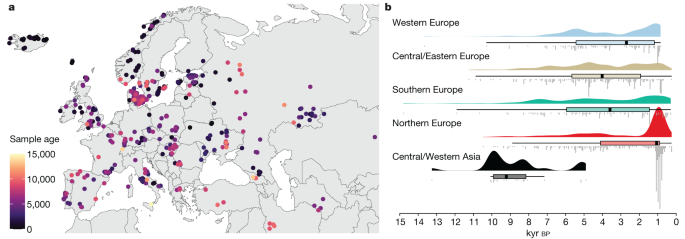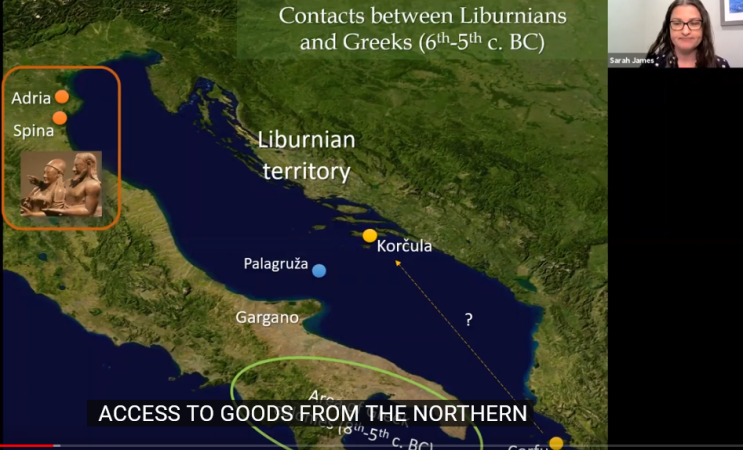Western Balkans BA and IA seem more like modern northern Italians. We do not yet have sufficient data from northern Italian BA and IA to support a similarity with Western Balkans BA and IA. Although it is undeniable that there were migrations from the Balkans, there is the huge problem that the Latins are similar to the Etruscans, and not to the Western Balkans BA and IA. If the Italics came from the Balkans, it means that there is no language macrofamily that includes both Latin-Faliscan and Osco-Umbrian languages, as supported by some linguists.
If I go to an archaeologist and tell him that Italics are of Illyrian origin, he will slap me in the face. Even the relationships between the Veneti and Illyrians are considered the subject of pseudoarchaeology; the consensus among linguists is that the Venetic language has remote relationships more with Latin more than with the Osco-Umbrian languages.
Unfortunately, it is all much more complicated, and it may very well be that there were multiple different layers of Indo-European language migrations, with only one IE language per group eventually becoming established in the Iron Age. A few weeks ago a study was presented that statea in the abstract that Oenotrians and Lucanians from southern Italy turn out to be genetically similar to people from Lazio and Etruria (Latins and Etruscans, I guess). Inscriptions found in Tortora and attributed to the Oenotrians are considered Paleo-Italic, those from Lucania are classified as Osco-Umbrian (of the Oscan type). Of course, as we have seen repeatedly, abstracts can change. But there is no doubt that we need many studies from all over Italy before drawing conclusions.
ARCHAEOGENETIC INSIGHTS INTO THE ANCIENT CITY OF BLANDA: A MILLENNIA-LONG PERSPECTIVE FROM THE NECROPOLIS OF TORTORA (CS, CALABRIA, ITALY)
Fabrizio Mollo1, Mariangela Barbato2, Afredo Coppa3,4,5, Francesco La Pastina3, Michaela Lucci3, Swapan Mallick5,6, Alessandra Sperduti7,8, Ron Pinhasi4, David Reich5,6, Alissa Mittnik9,5,6
1 University of Messina
2 Superintendency of Archaeology, Fine Arts and Landscape for the province of Cosenza, Italy
3 Department of Environmental Biology, Sapienza University of Rome, Italy
4 Department of Evolutionary Anthropology, University of Vienna, Austria
5 Department of Genetics, Harvard Medical School, Boston (MA), USA
6 Department of Human Evolutionary Biology, Harvard University, Cambridge (MA), USA
7 Servizio di Bioarcheologia, Museo delle Civiltà, Italian Ministry of Culture, Rome, Italy
8 Università degli Studi “L’Orientale” di Napoli, Naples, Italy
9 Max Planck Institute for Evolutionary Anthropology, Leipzig, Germany
The necropolis of Tortora comprises two main burial nuclei: the first dating to the Archaic and Pre-Roman period, features two culturally distinct chronological periods, the older Oenotrian (6th and 5th century BCE) and later Lucanian phase (4th century BCE). The second pertains to the Early Medieval period (7th to 9th century CE). In our ongoing archaeogenetic study, genome-wide data from 44 individuals across all phases, reveal five pedigrees, two from the Oenotrian, two from the Lucanian, and one from the Early Medieval phase. Population genetic analyses delineate two main genetic clusters aligning with the cultural and chronological groups. Most individuals from the 6th to 4th century BCE genetically resemble contemporaneous populations from Lazio and Etruria, while the Early Medieval individuals are shifted more toward Aegean and Near Eastern populations. Notable, genetic outliers from the first period suggest potential Greek gene flow or incorporation of Greeks into the local Oenotrian population. A series of absolute dates largely confirms the archaeological chronology, albeit with low resolution for the earlier phases due to the Hallstatt Plateau. Unexpectedly, two individuals from Tomb 61 were dated to the Roman Imperial period, a phase during which there is no archaeological documentation of the use of the necropolis. This Lucanian tomb had been violated in ancient times; it was devoid of grave goods, but the structure (chamber tomb of large blocks of limestone with red-coloured walls) signifies very high rank. These individuals are also outliers in terms of their genetics: the adult male (2nd-4th century CE) shares genetic affinity with ancient Eastern Baltic populations, while the adult female (1st century BCE-2nd century CE), clusters with contemporaneous population of Rome. This research illuminates the population and social dynamics of the city of Blanda, spanning over a millennium and offering nuanced insights into the use of its necropolis.



